Introduction
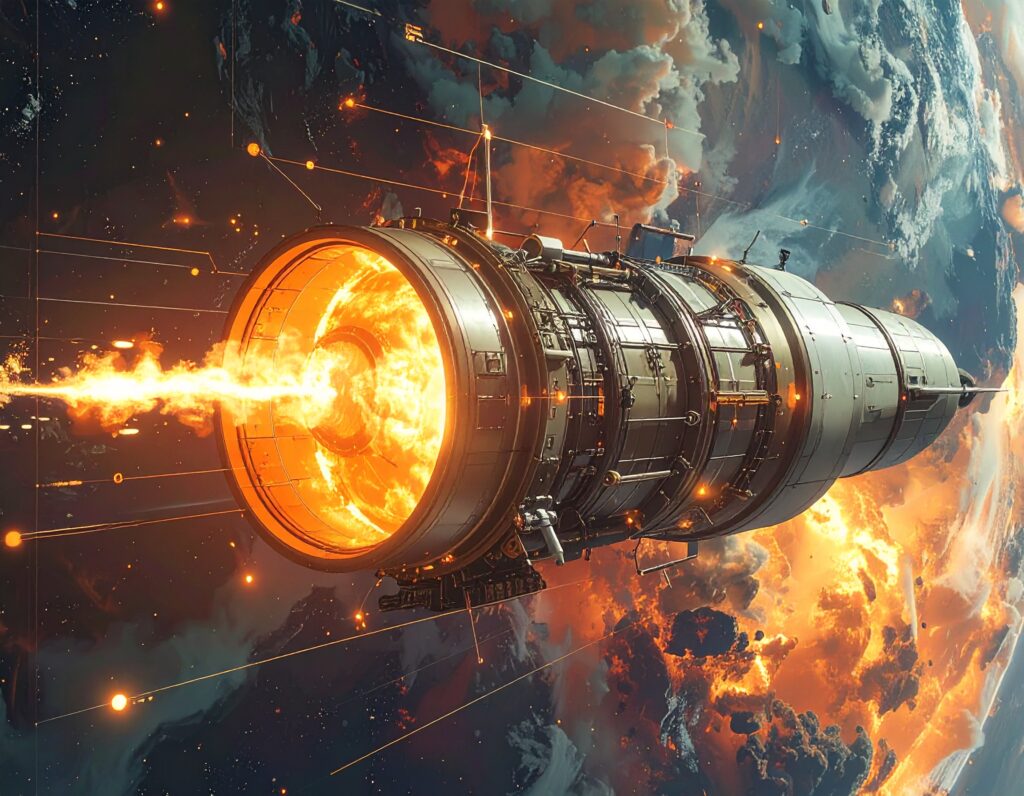
Let’s be honest: “It’s not rocket science” is probably the most famous put-down for something simple. We’ve all heard it. It’s created this idea that rocket science is an impossibly complex field, understood only by a handful of geniuses with chalkboards full of terrifying equations.
But what if I told you that the fundamental principle that gets a rocket from the launchpad to the Moon is something you probably learned in middle school?
It’s true. The core physics of rocket propulsion is built on a concept so elegant and simple that once you get it, you’ll watch every launch with a new sense of wonder and understanding. This isn’t about dumbing it down; it’s about clearing away the jargon to reveal the beautiful logic underneath.
So, whether you’re a curious student, a space enthusiast, or just someone who wants to know how humanity’s greatest machines work, you’re in the right place. Let’s demystify rocket science together.
1. The Fundamental Rule: It’s All About Pushing Back
Imagine you’re standing on a perfectly frictionless skateboard, holding a heavy bowling ball. You and the skateboard are perfectly still. Now, with all your might, you throw the bowling ball forward.
What happens?
You don’t just stay put. You and the skateboard roll backwards.
Congratulations! You’ve just demonstrated the single most important concept in rocketry: Newton’s Third Law of Motion.
The law states it plainly: For every action, there is an equal and opposite reaction.
- The Action: You are throwing the bowling ball forward.
- The Reaction: The bowling ball “pushes” you backwards with an equal force.
Now, let’s trade your skateboard for a rocket and the bowling ball for exhaust gas.
A rocket engine is, at its heart, a machine designed to throw tiny “bowling balls” of hot, high-speed gas backwards as hard and as fast as it can. The action of throwing this mass of exhaust backward creates an equal and opposite reaction: a forward-pushing force on the rocket itself. We call this force Thrust.
The Mind-Blowing Part: This has nothing to do with pushing against the air. In fact, a rocket works better in the vacuum of space because there’s no air resistance. The rocket is pushing against its own exhaust, creating a self-contained system of propulsion. This is the brilliant insight that makes space travel possible.
2. The Force That Lifts the Rocket Propulsion: Understanding Thrust

So, we know thrust is the “push” that moves the rocket. But what determines how strong that push is? Why does the SpaceX Merlin engine produce so much more thrust than the engine on a model rocket?
It boils down to two simple things:
- How Much Stuff You’re Throwing Out (Mass Flow Rate): Think of it as the “firehose vs. squirt gun” effect. If you’re ejecting a huge amount of propellant mass every second (a high mass flow rate), you’re going to get a bigger push. A firehose has a high mass flow rate of water and pushes back on the firefighter with significant force. A squirt gun, not so much.
- How Fast You’re Throwing It (Exhaust Velocity): This is just as important. You can throw a ping-pong ball as hard as you can, and you’ll feel a tiny push. But if you could throw a baseball at the same speed, you’d feel a much bigger push. The momentum (mass x velocity) is what counts. In rocketry, we want our exhaust gases to be moving as incredibly fast as possible.
We can simplify this into a powerful little relationship:
Thrust ≈ (Mass Flow Rate) x (Exhaust Velocity)
In simpler terms: To get more thrust, you need to throw more stuff out the back, throw it faster, or, ideally, both!
This is why rocket engines look the way they do. The massive combustion chamber is for burning immense amounts of fuel and oxidizer to create a huge volume of high-pressure gas (high mass flow rate). The bell-shaped nozzle is specially designed to funnel and accelerate that gas to supersonic speeds (high exhaust velocity). The result? A colossal amount of thrust that can overcome Earth’s gravity.
3. The Rocket’s “Fuel Efficiency”: What is Specific Impulse?
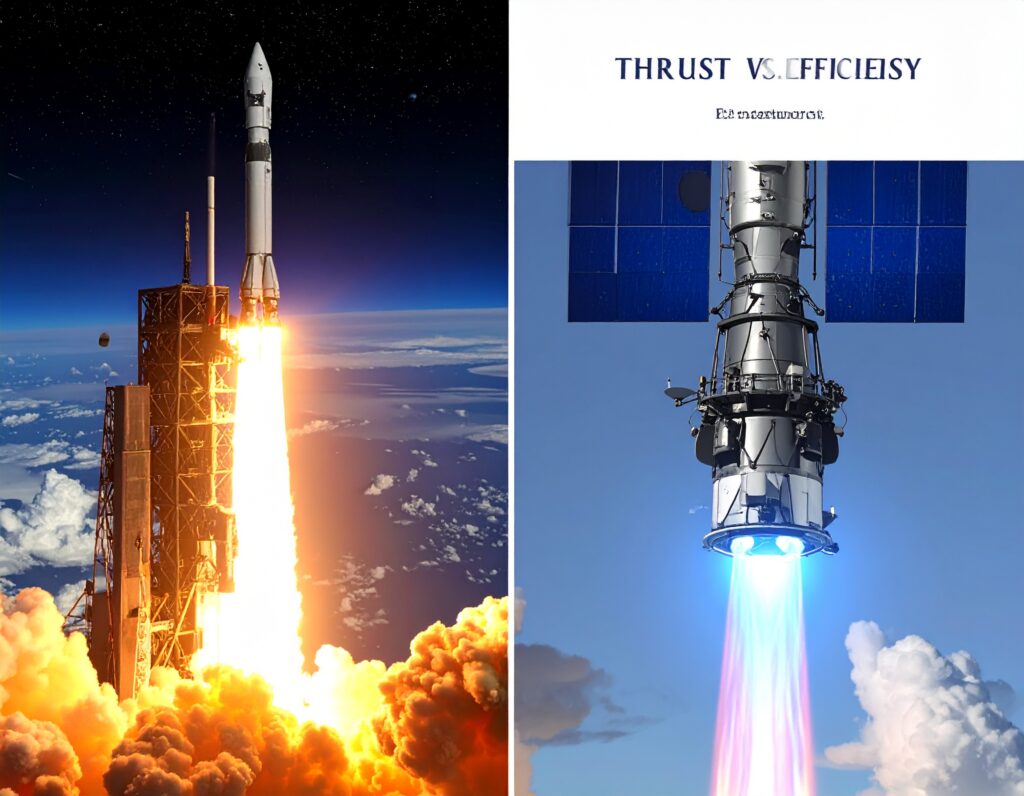
If you’re shopping for a car, you probably look at the MPG (Miles Per Gallon). It tells you how efficiently the car uses fuel. In rocketry, we have a very similar concept, but we call it Specific Impulse, or Isp (pronounced “I-S-P”).
Think of Isp as the “MPG for rocket engines.”
It’s a measure of how much “bang for your buck” you get from your propellant. A high Isp means the engine is very efficient, producing a lot of thrust for a long time from a given amount of fuel. A low Isp means it guzzles fuel quickly.
How is it measured? Technically, specific impulse is defined as the thrust produced per unit weight of propellant consumed per second. The standard unit is seconds. Without getting too deep into the math, a higher number of seconds is better.
- Example: The Space Shuttle Main Engine (SSME) had a very high Isp of around 450 seconds in a vacuum. It was a highly efficient, complex liquid engine.
- Example: A simple solid rocket booster on the same Space Shuttle had a lower Isp of around 270 seconds. It was less efficient but provided an immense amount of thrust at liftoff, cheaply and simply.
This introduces a key trade-off in rocket design: Thrust vs. Efficiency. Sometimes you need raw, brute-force power to lift off against Earth’s gravity (high thrust, even with lower Isp). Other times, like when cruising in space, you want to be as fuel-efficient as possible to make your propellant last for months or years (high Isp).
This is also why we have different types of engines for different jobs. The ion thrusters used on deep-space probes like Dawn have an incredibly high Isp (over 3,000 seconds!), making them ultra-efficient. But they produce a thrust about equal to the weight of a single piece of paper—far too little to leave Earth. They are the Prius of the rocket world: slow and steady, but incredibly efficient for the long haul.
4. The Tyrant of Spaceflight: The Rocket Equation
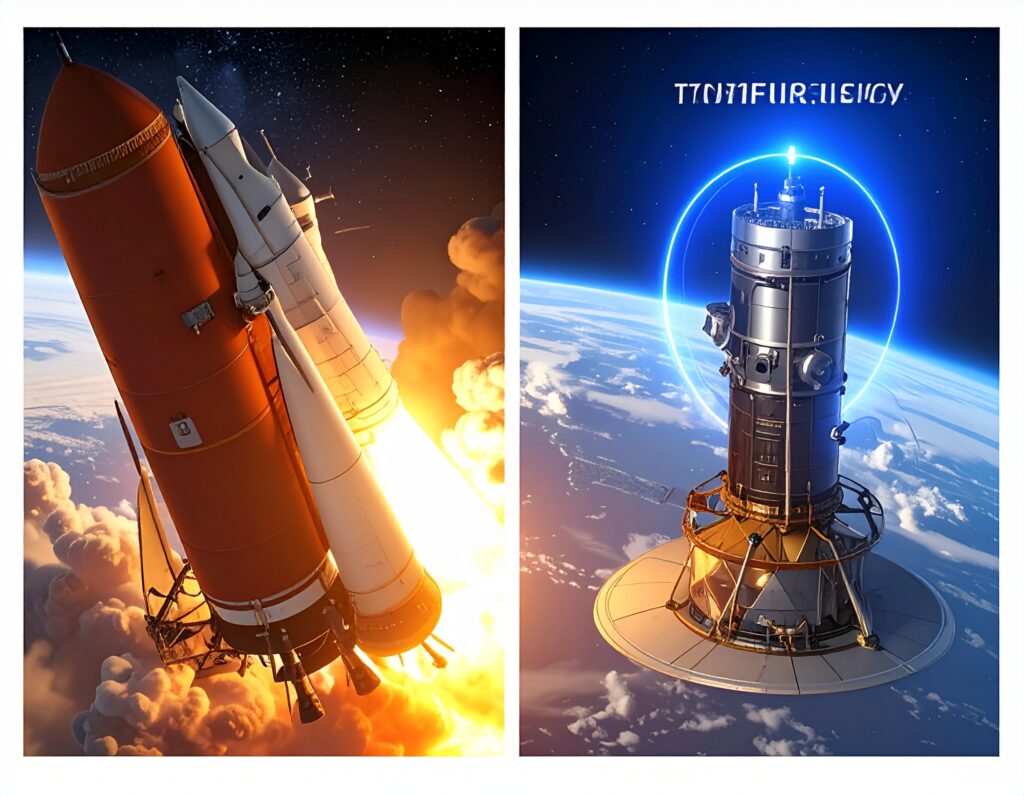
Alright, we’ve got our thrust, and we’ve got our efficient engine. So we just strap a big enough fuel tank to our rocket and go to Mars, right?
Not so fast. Here we meet the infamous, unforgiving, and utterly fundamental challenge of spaceflight, perfectly described by the Rocket Equation, also known as the Tsiolkovsky Rocket Equation.
This equation exposes a brutal truth, often called the “Tyranny of the Rocket Equation.”
Let’s set the scene. You want your rocket to go faster (to achieve a higher change in velocity, or Δv – “Delta-v”). To do that, you need to burn more fuel. But adding more fuel makes your rocket heavier. A heavier rocket needs more thrust to accelerate, which requires… even more fuel to push that extra fuel!
It’s a vicious, self-defeating cycle.
The rocket equation is the mathematical embodiment of this problem. Here it is in its glory:
Δv = Isp * g₀ * ln(m₀ / m_f)
Don’t panic! Let’s break down what this means in plain English:
- Δv (Delta-v): This is the total change in velocity your rocket can achieve. It’s the “currency” of spaceflight. Getting to orbit, going to the Moon, landing on Mars—each of these requires a certain “budget” of Δv.
- Isp: We know this one! It’s the fuel efficiency of our engine.
- g₀: Standard gravity. It’s basically a constant to make the units work.
- ln: The natural logarithm. This is the real killer.
- m₀: The rocket’s initial total mass (fully fueled).
- m_f: The rocket’s final mass (after the fuel is burned—just the empty rocket and its payload).
The most important part is the ratio m₀ / m_f, known as the mass ratio. To get a lot of Δv (to go far and fast), this number needs to be huge.
What does a “huge” mass ratio look like? Let’s take the iconic Saturn V moon rocket.
- Initial Mass (m₀): ~6.5 million pounds (fully fueled)
- Final Mass (m_f): ~300,000 pounds (the parts that reached orbit, minus the spent stages)
- Mass Ratio (m₀ / m_f): Roughly 22
That means for every 1 pound of rocket in orbit, it took 22 pounds of rocket on the launchpad to get it there. The Saturn V was over 95% propellant by mass! It was essentially a flying fuel tank.
This exponential relationship, driven by the logarithm, is why rockets are so big and why we use staging—jettisoning empty tanks and dead engines during flight. By shedding this “dead weight,” the remaining engines don’t have to waste energy accelerating it, making the whole system far more efficient. Beating the rocket equation is the central puzzle of orbital flight.
5. A Peek Under the Hood: Key Components of a Rocket Engine
Now that we understand the physics, let’s look at the machine that makes it all happen. A typical liquid-fueled rocket engine is a masterpiece of mechanical engineering, but its core components are straightforward.
1. The Propellant: Fuel & Oxidizer
This is the “food” for the engine. Unlike a car engine that pulls oxygen from the air, a rocket must carry its own oxygen source (the oxidizer) because there’s no air in space. Common combinations include:
- Kerosene (RP-1) and Liquid Oxygen (LOX): Used in SpaceX’s Falcon 9. Powerful and relatively stable.
- Liquid Hydrogen and Liquid Oxygen: Used in the Space Shuttle main engines. Very high efficiency (Isp), but hydrogen is less dense and harder to handle.
- Hypergolics (e.g., Hydrazine and Dinitrogen Tetroxide): These ignite on contact, making them very reliable. Used in spacecraft thrusters where simplicity is key.
2. The Combustion Chamber
This is the “heart of the beast.” Here, the fuel and oxidizer are injected, mixed, and ignited, creating an inferno of intensely hot, high-pressure gas. The temperatures inside can be over 3,000°C (5,400°F)—hot enough to boil iron.
3. The Nozzle: The Magic Shape
If the combustion chamber is the heart, the nozzle is the voice. This bell-shaped section is where the magic of acceleration happens. The high-pressure gas from the chamber flows into the nozzle and expands dramatically, accelerating to supersonic speeds (often over 10,000 mph) as it exits. This shape is meticulously designed to get the highest possible exhaust velocity, maximizing our thrust. Many nozzles are also “cooled” by running the cryogenic fuel through tubes in the nozzle wall before injection, preventing it from melting.
Conclusion: You’ve Just Mastered the Basics of Rocket Science!
Look how far we’ve come. We started with a skateboard and a bowling ball and ended up understanding the fundamental challenge that dictates the design of every rocket that has ever flown.
Let’s do a quick recap:
- Newton’s Third Law provides the “why” – action/reaction is the core principle.
- Thrust is the “push,” determined by how much propellant you eject and how fast you eject it.
- Specific Impulse (Isp) is the measure of fuel efficiency.
- The Rocket Equation describes the brutal, exponential relationship between fuel and payload, explaining why rockets have to be so large and use staging.
The next time you watch a live stream of a rocket launch, you won’t just see a fiery spectacle. You’ll see Newton’s Laws in action. You’ll appreciate the controlled explosion producing immense thrust. You’ll understand why the first stage falls away, and you’ll know that the engineers have meticulously calculated every second of burn to manage their precious Δv budget.
You now possess the foundational knowledge to understand one of humanity’s greatest technological achievements. It is rocket science—and you get it.
Frequently Asked Questions (FAQ)
Q: If a rocket pushes against its exhaust, how does it work in space where there’s nothing to push against?
A: This is the most common misconception! The rocket doesn’t need to push against the air. The action-reaction pair is between the rocket and its exhaust. When the engine throws exhaust backward, the exhaust pushes forward on the engine with an equal force. This internal force is completely independent of any outside atmosphere and, in fact, works more efficiently in the vacuum of space without air pressure holding the exhaust back.
Q: What’s the practical difference between solid and liquid rocket engines?
A: It’s all about control vs. simplicity.
- Solid Rocket Boosters (SRBs): The propellant is a solid, pre-mixed blend of fuel and oxidizer (like a giant firework). Once lit, they cannot be turned off or throttled. They are simple, reliable, and provide a lot of thrust for their cost, but they are less efficient.
- Liquid Rocket Engines: Fuel and oxidizer are stored in separate tanks and pumped into the combustion chamber. This allows engineers to throttle the engine up or down, turn it on and off, and even restart it in space. They are more complex and expensive but offer far greater control and higher efficiency.
Q: Why do rockets have multiple stages?
A: To beat the “Tyranny of the Rocket Equation.” Why carry the dead weight of empty fuel tanks and massive engines that are no longer needed? By jettisoning stages, the rocket becomes progressively lighter, allowing the remaining engines to accelerate the remaining payload much more effectively. It’s like a road trip where you drop off your empty gas cans along the way instead of carrying them to the destination.
Q: What exactly is an ion thruster?
A: An ion thruster is a type of electric propulsion. Instead of burning chemicals, it uses electricity (often from solar panels) to ionize a gas (like Xenon), turning it into plasma. It then uses electric fields to accelerate these ions to extremely high speeds and shoot them out the back. The thrust is very, very tiny, but the specific impulse (Isp) is astronomically high. This makes them perfect for slow, steady, long-duration missions like propelling probes to other planets, where they can run for thousands of days, slowly building up incredible speed while using very little propellant.
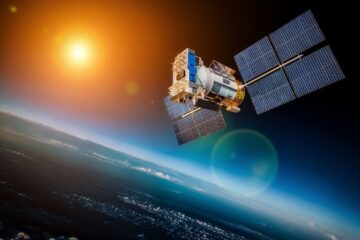
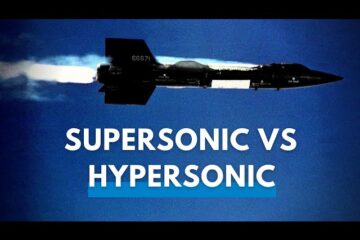

0 Comments